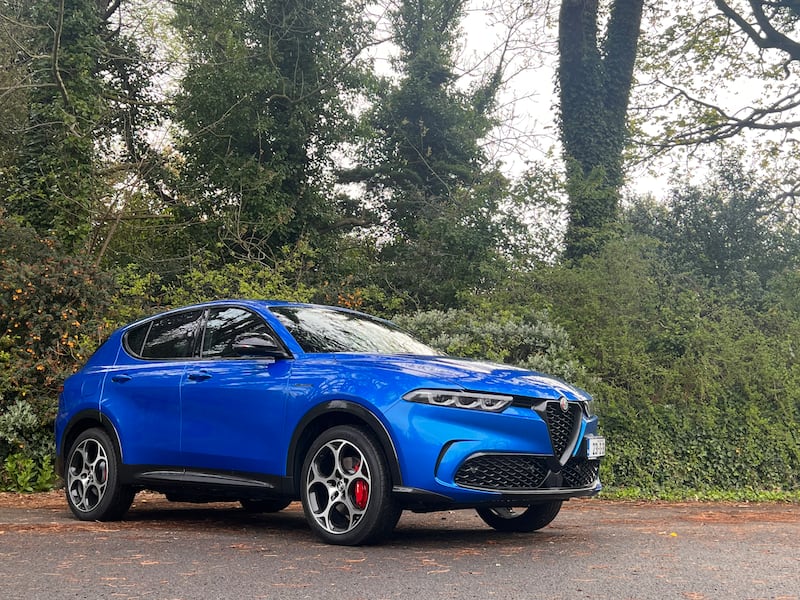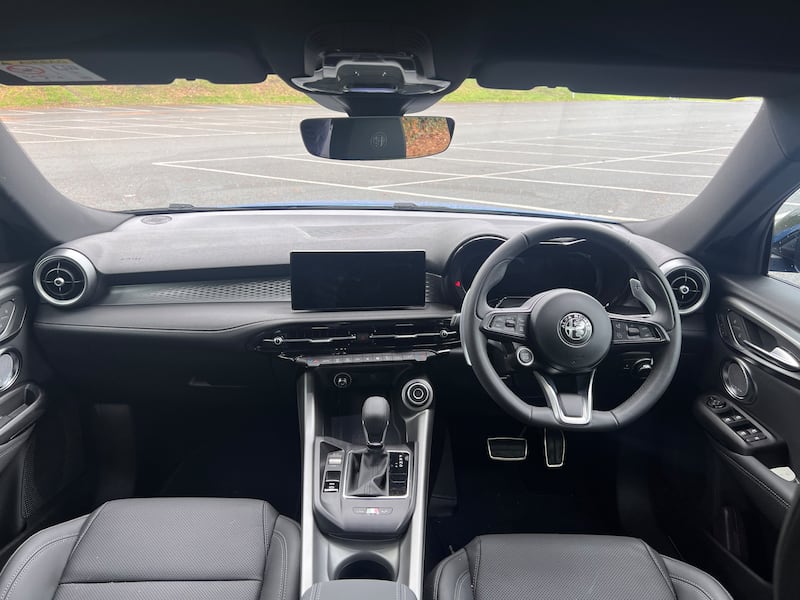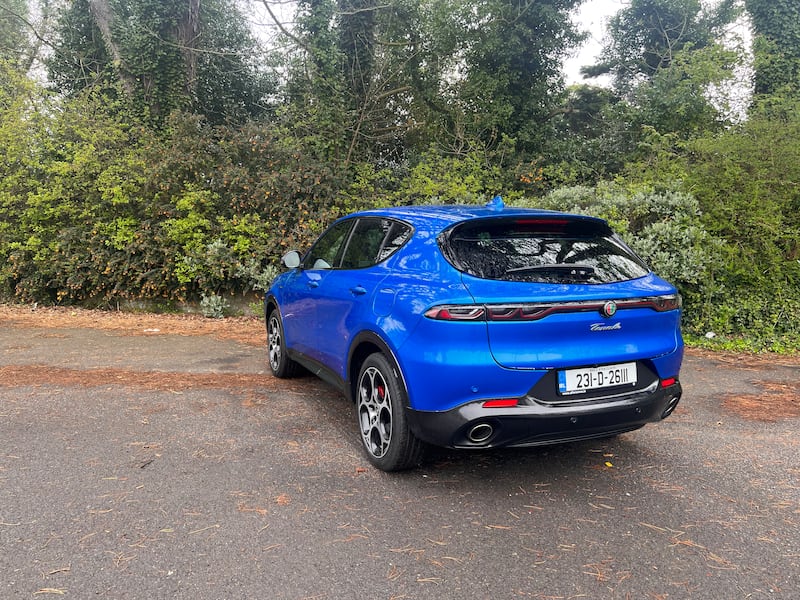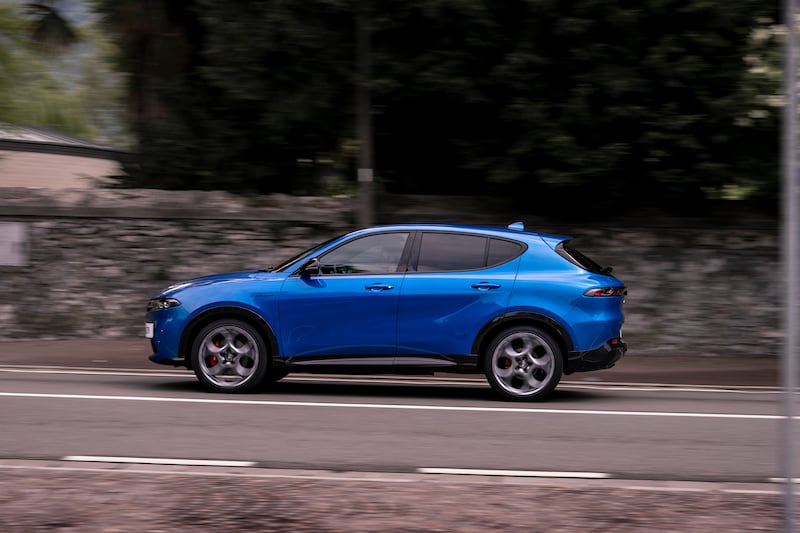I’m not really allowed to review Alfa Romeos. My foolish, boyish enthusiasm for the brand just gets in the way. It’s not just a simple case of all-car-nuts-love-Alfas thing either – I was practically weaned on the brand.
When I was a mere pre-schooler, my grandmother owned a pearly-white Alfasud hatchback, complete with black vinyl seats and a stubby rubber boot spoiler. It was the only Alfa in west Cork and therefore the most exotic car around. It went like hell, sounded great, and she drove it in accordance with her nickname – Granny Mansell. I loved that car almost as much as I loved my gran, and it and she are the reasons I’m a car fan.
Fast-forward to today, and in front of me sits the latest Alfa. This is the Tonale, and it’s Alfa’s first entry into the single most important car segment in the market today: the premium compact crossover. It’s also Alfa’s first single step on a 1,000-mile march that will see it become a fully-electric brand by 2027, as this one is the plug-in hybrid version.
It looks great, in fairness. I mean, SUVs and crossovers are rapidly becoming the modern equivalent of 1980s mid-size saloons – take the badges off and you can’t tell them apart – but the Tonale manages to successfully blend a modern crossover shape with classic Italian styling cues.
‘There are times I regret having kids. They’re adults, and it’s now that I’m regretting it, which seems strange’
Cillian Murphy: ‘You had the Kerry babies, the moving statues, no abortion, no divorce. It was like the dark ages’
The Dublin couple who built their house in a week
John Creedon: ‘I was always being sent away, not because they didn’t love me, but because they couldn’t cope’

You get the inimitable V-shaped grille, the glowering three-element headlights that nod their heads in the direction of the gloriously mad 1980s SZ coupe, the “teledial” alloys, and some fantastic details like the Italian flag inset into the wing mirrors, and the fact that the green serpent part of the Alfa badge (which is the Milanese coat of arms) has been repurposed as a snaking plug. Compared to the overly-blocky BMW X1, and the overly-bland Mercedes GLA and Audi Q3, this is utterly gorgeous.
Inside, it’s broadly nice, but in the manner of a Hollywood producer . . . I have some notes. The twin screens are mostly very good. In front of the driver, set deep under a classic cowl, there’s a 12.3-inch digital instrument screen, which allows you to choose between modernity for the layout, or a photo-real recreation of the analogue instruments from a 1960s Giulia GTA. Guess which setting I chose? Go on, guess . . .

The 10-inch screen in the centre is okay. It has nice, slick-looking graphics (which actually look more expensive than what you get in a BMW X1) but the menu layout is overly confusing at times, and some of the buttons are rendered too small to be easy to accurately poke at on the move. There’s better news in that there are proper, physical air conditioning controls, and all of the materials used in the cabin look and feel top-drawer.
[ The 1983 car that gave birth to modern MercedesOpens in new window ]
Well, almost all. Oddly, the three-spoke steering wheel, with its inset starter button, feels oddly cheap and insubstantial here. Strange, as basically the same wheel feels fine in the Giulia saloon and in the larger Stelvio SUV. Likewise, the column stalks and a few of the more minor buttons feel a touch fragile. It’s not a deal-breaker, but it may give you pause . . . It does have terrific seats, though – comfy, supportive and they look nice too with their embroidered Alfa logos.

The space on offer might also give you pause. Actually, volumetrically, the Tonale is fine, but the cabin’s architecture makes you feel hemmed in and there’s definitely not the roomy, airy feeling you get in the BMW X1. The boot in this plug-in hybrid model is also truncated, at just 385 litres compared with the 500 litres you get in the mild-hybrid Tonale.
Speaking of the plug-in hybrid, this is where it all starts to go down a little. There’s copious power on offer from the combined efforts of the turbocharged 1.3-litre petrol engine and the 90KW electric motor. The combined power output is a robust 280hp, and the petrol engine provides 270Nm of torque, while the electric motors chime in with 250Nm of their own. Two motors mean four-wheel drive, so the Tonale can really launch, hitting 100km/h in 6.2 seconds.

The problem is that this is great in theory, but the actual way this hybrid system delivers its power is not so good. In fact, it’s awful – the throttle pedal, whether you’re in Dynamic or Normal modes, selected by a rotary switch on the centre console, feels gluey and stiff under your foot, while the six-speed automatic gearbox seem incredibly reluctant to make up its mind what gear you need.
Yes, you can take manual control with the fabulous solid-aluminium gearshift paddles behind the wheel, but even then the power delivery seems at best awkward, and the Tonale lacks the smoothness of PHEV models from Audi, Mercedes and – especially – Toyota.
The 1.3-litre engine has a gruff edge to it too, which can make the Tonale sound occasionally enthusiastic, but which for the most part just annoys as it blares tunelessly while the gearbox tries to work out what it’s supposed to be doing.
[ Lexus RX plug-in hybrid proves a smooth operatorOpens in new window ]
At least the all-electric bit works well. Fully charge the battery and Alfa claims you can get 70km out of the Tonale’s electric range. It’s probably more like 50km in reality, but that’s still decent and at least the power delivery becomes much smoother and more consistent.
Fuel economy is okay. On longer motorway runs with a flat battery, it tends to settle down at about 6.5 to 7 litres per 100km, which isn’t brilliant but which is also not disastrous. Alfa, like so many others, needs to take lessons from Toyota and Kia as to how to get decent long-run economy from a PHEV.
In terms of how it drives, the Tonale is also a bit of a mixed bag. There’s genuine enthusiasm and no little aplomb in how it tackles corners, but the steering is too light and too fast for you to completely trust what the nose is going to do. In spite of having to control an 1,800kg kerb weight, the ride quality is actually not bad, but the suspension can be annoyingly noisy in how it responds around town, which makes the ride seem worse than it actually is.
So, for all my baked-in love of Alfa Romeos, I just don’t love this one. It will likely do well for Alfa – it’s hard not to sell a mid-size crossover, and the PHEV powertrain will prove tempting for business user-choosers. If it were me, I’d have the more practical, less complicated mild-hybrid instead, which is a much more satisfying car all round, if less tax- and tech-friendly.
This is usually the part where we say that Alfa’s oft-shaky future depends on the success of the Tonale, but actually it’s not the case. For once, the brand is in profit, and its owners at the vast Stellantis group have guaranteed its future investment and model plans for the next 10 years. The man who made Peugeots interesting and dynamic again, Jean-Philippe Imparato, is now the chief executive at Alfa, so the omens are definitely good, and the all-electric replacement for the sex-bomb Giulia saloon is shaping up to be a potentially very special car indeed.
The Tonale? Sorry, but – at least with the PHEV powertrain – it’s just not for this Alfa fanatic. Unlike the larger Stelvio, it’s too much SUV and not enough Alfa. For most customers, that will probably be the right ratio, but I’ll wait for what comes next, thanks.
Alfa Romeo Tonale 280hp PHEV eAWD Veloce: the lowdown
Power: 1.3-litre four-cylinder turbo petrol engine + 90kW e-motors developing 280hp and 270Nm (+250Nm e-motors) of torque, powering all four wheels via a six-speed automatic transmission.
CO2 emissions (annual motor tax) 29g/km (€140).
Fuel consumption: 1.3l/100km (WLTP).
Electric range: 69km (WLTP).
0-100km/h: 6.2 sec.
Price: €59,245 as tested, Tonale starts from €49,995.
Verdict: There’s a good car in here being blocked by an awkward plug-in hybrid system.




